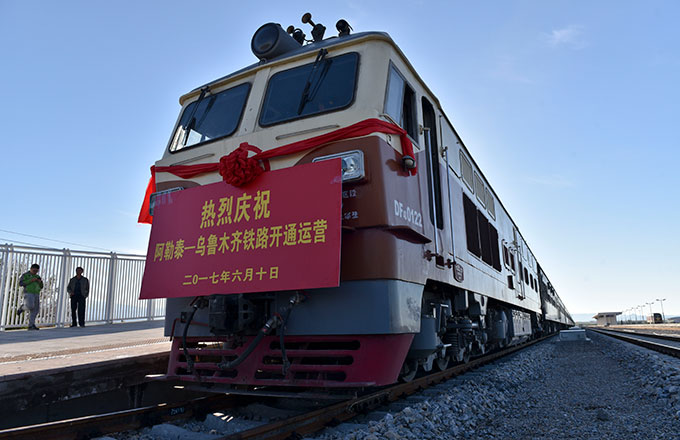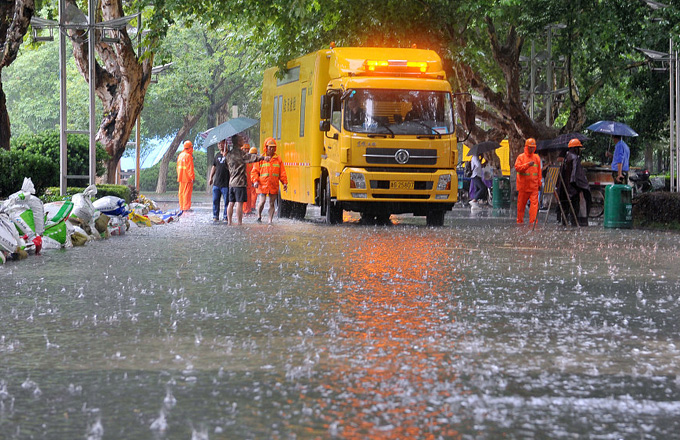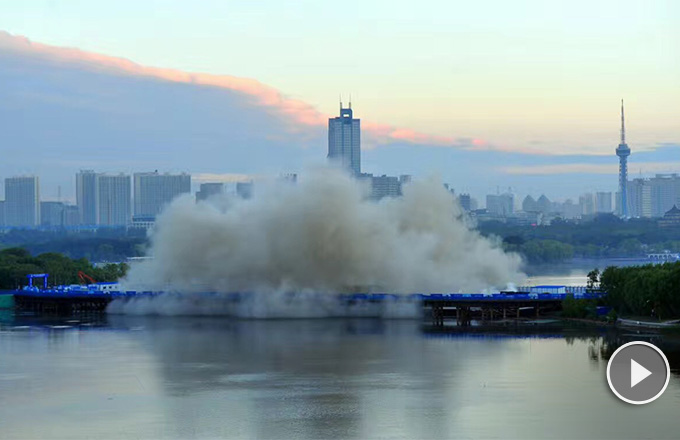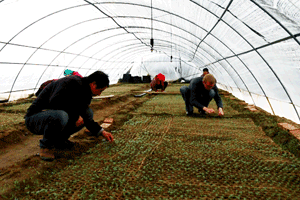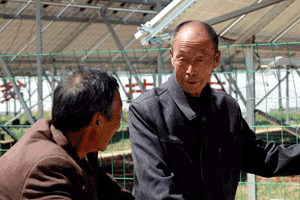No 1 Document for 2010
Regarding Proposals on
Strengthening the Efforts of Coordinative Urban-Rural Development and
Further Consolidating the Basis of Agricultural and Rural Development
Issued on: Dec 31, 2009
The year of 2009 is the most difficult year for China's economic development since the new century. Despite of serious impacts brought by the international financial crisis which is rarely seen in history, the challenges of grave natural disasters and the negative influences of abnormal fluctuations in international and domestic markets of agriculture products, under the firm leadership of the CPC Central Committee and the State Council, thanks to joint efforts from various regions and departments, we have successfully coped with these difficulties and challenges. The overall situation of agricultural and rural development has been kept prominent. We gained a harvest year of grain production, which is an increase for six successive years. The employment rate of migrant workers recovered quickly, and the income of farmers' increases, a growth for six successive years. The collective forest tenure reform has been progressed and advanced in full scale, and new breakthroughs been made in rural institutional innovation. Construction of water supplies, power supplies, roads, gas supplies and housing in rural areas continue to be enhanced and the conditions of production and life in rural areas improved significantly. Rural education, health service and social security system continue to be improved, resulting in notable improvement in rural livelihood. The grassroots organizational construction in rural areas was further strengthened, and social stability in rural areas has been well maintained and harmonious. These accomplishments have gained favorable strategic advantages for CPC and the State in tackling the challenges and have provided essential support to China's efforts in ensuring economic growth and safeguarding people's livelihood.
Currently, China's agriculture becomes increasingly open to the international market. The linkage between rural and urban economies has been enhanced significantly; climate change is having a growing impact on agriculture. While there are many favorable conditions and positive factors for agricultural and rural development, we are also facing growing challenges of various kinds, both traditional and non-traditional. In this changing development environment, further growth and upgrading of agricultural production is confronted with more and more constraints; the level of difficulty in keeping a relative rapid income growth for rural residents becomes bigger and bigger; the demand on transforming the pattern of agricultural development is becoming increasingly high; and the task of breaking the rural-urban dualist structure increasingly arduous. All CPC members must have a concept of preparedness so as to prevent any oversight and loosing up on the work of the "three rural issues" (namely agriculture, farmer and rural area, also known as San Nong Wenti in China). All efforts should be made to prevent decline of grain production, avoid fluctuation of farmers' income, and keep the good impetus of agricultural and rural development in the right direction. We must keep the "three rural issues"as "first top priority among others" in the Party's work, stabilize and improve the CPC's basic policies in rural areas, give particular attention to strengthening the infrastructure for agriculture and rural development, establish and improve market-based services for agriculture at the grassroots level, strengthen rural organizations centered by the Party organization, build a solid foundation for rural and agricultural development, and promote coordinated industrialization, urbanization and agricultural modernization, so as to achieve integrated economic and social development in urban and rural areas.
The overall requirement for rural and agricultural work in 2010 is as follows: fully implement and adopt the concept and requirements as so specified at the 17th National Party Congress and the 3rd and 4th plenary sessions, as well as the Central Economic Work Conference; hold high the banner of socialism with Chinese characteristics, use Deng Xiaoping Theory and the thoughts of "three represents" as our guidance and deepen the studies and practices of the Scientific Outlook on Development. Making coordinated development of urban and rural areas as a fundamental requirement in building the all-round well-off society ("xiaokang"); making the improvement of rural livelihood as the important contents of adjusting the distribution patterns of the national revenue; making the enhancement of demands from rural areas as the key measures to spur domestic demands; making the development of modern agriculture as the important mission of transforming economic development patterns; making the construction of new socialism countryside and promotion of urbanization as the long-lasting impetus of maintaining stable and rapid economic development. By following the basic concept which aims to stabilize grain production to ensure supply, increase farmers' income to benefit their life, deepen reforms to promote overall planning and strengthen basis to increase development impetus, we spare no efforts in doing a good work in agriculture and rural areas and continue to make new contributions to the success of reform, development and stability.
I. Improving the policy system that supports and benefits farmers to promote resource elements allocation to rural areas.
1. Continue to increase investments from the state to agriculture and rural areas. Total funding for "three rural issues" will keep increasing, and its share in government budget will gradually increase as well. Expenditures for agriculture and rural development will be a priority in government spending; in-budget investment on fixed asset should give priority to agricultural infrastructure and rural livelihood projects; for land transfer revenues, a priority area of spending is agricultural land development and rural infrastructure. Public spending on agriculture at all levels of government must grow at a higher rate than the growth rate of regular budget revenues. In-budget fixed asset investment should continue to lean towards major rural and agricultural projects. After the Farmland Occupation Tax rate is raised, all the incremental revenue must be used on agriculture. The relevant regulations must be strictly followed with regard to the calculation and withdrawal of land transfer revenues for agricultural land development; similarly, the rule that revenues from the new construction land use fee should be used for agricultural land development and rehabilitation must be followed. Inspections should be carried out on the collection and use of all fees for agriculture and rural development. Funding for the development of modern agriculture and comprehensive agricultural development should be increased.
2. Improving the system of agricultural subsidy and mechanism of market adjustment. Direct subsidy for grain-producing farmers will continue. "Improved variety subsidy" will increase, and the coverage of potato subsidy will expand. Improved variety subsidy for highland barley will be initiated, and pilot for peanut improved variety subsidy will be launched. Agricultural machinery subsidy will be further increased, and types of machinery eligible for subsidy expanded – machines for livestock, forestry, and water-saving irrigation will be covered by the subsidy program. The comprehensive agricultural input subsidy dynamic adjustment mechanism will be implemented and improved. While keeping the structure of distribution of the existing level of subsidies unchanged, the new increases in subsidies should be in favor of large grain farmers and specialized farmers' cooperatives. We shall gradually improve subsidy polices suitable for pastoral, forest and land reclamation areas. Supervision on agricultural subsidies should be strengthened to make sure they are well implemented. It is forbidden to use subsidies for deduction in farmers' payment of various fees. The minimum purchase price for wheat will be implemented, and there will be further increase in the minimum purchase price for rice. Increase the size of grain storage in grain-selling areas. Adopt an "impromptu purchase and storage policy" for maize, soybean and rapeseed when appropriate, and support enterprises to participate in the purchase and storage. Improve the auction mechanism for agricultural products purchased and stored by the state. Put in place adjustment and control plans for cotton, sugar and pork and ensure a stable market and reasonable price levels for agricultural products.
3. Improve the quality and level of rural financial services. Enhance effectively linkage between fiscal policies and rural financing policies, encourage more credit to be offered to the "three rural issues," and address financing difficulties in the rural areas. Implement and improve policies such as tax preferences for agriculture-related loans, subsidies for rural financial institutions, and awards for increases in loan issuance. Further improve the financial institutions at the banking sector within the country level and the deposits should be primarily used for issuing loans at the local level. Increase the level of support from financing policy aspect regarding the key areas and weak areas in rural reform and development. Expand areas of support by the Agricultural Development Bank, and vigorously develop medium-and long-term policy lending for agricultural development and rural infrastructure. Actively promote micro-finance for rural areas. Rapidly cultivate the establishment of village and township banks, lending companies and rural credit cooperatives, orderly develop micro-finance organizations, and facilitate the creation of all kinds of new financial institutions to meet the need for agricultural and rural development. Formulate a method for subsidizing the establishment of new financial institutions in remote areas, so as to ensure that there will be no townships and villages with no financial services in three years. Encourage innovations in financial product and methods of delivery suitable for rural areas, build a better rural credit environment, and improve and strengthen supervision on rural finance. Create a fund for agricultural industrialization. Expand coverage of agricultural insurance in terms of products and regions, and increase central government's subsidies for insurance premiums in the mid-and-western regions.
Encourage local governments to provide insurance premium subsidies for high-value agricultural products and rural housing. Develop rural micro-insurance. Improve agricultural reinsurance system and build a publicly funded catastrophe risk mitigation system. Support agriculture-related enterprises to be publicly listed if they meet the necessary conditions.
4. Guide social resources towards agriculture and rural areas. All agencies and sectors should take a proactive approach in serving the needs for agricultural and rural development in favor of rural areas when plans, project development and fund increase are to be made. Large- and medium-sized cities should play an important role in generating spillover benefits for the rural areas. Encourage various sectors of the society to conduct twinning support and provide assistance to villages and take part in the agricultural industrialization and rural public infrastructure development. If enterprises give donations for rural public utilities through charities, the people's governments at and above the county level, or special rural public welfare funds, the portion below 12% of their annual profit will be deducted from taxable income. Relevant agencies should continue to improve the "science and technology, education, culture, and health service for the countryside" systems – encouraging more teachers, more staff from cultural and scientific research institutes and more doctors to provide service in rural areas through measures such as material and honorary rewards, early promotion, and "free training in exchange of service." Improve the agricultural meteorological service system and meteorological disaster prevention system and make the meteorological service play an important role in serving agriculture.
5. Vigorously develop the rural market. Formulate new methods and measures to stimulate rural consumption as needed. Enhance the implementation of the "home appliances, automobiles and motorbikes for the countryside" program, and greatly raise the price ceiling for the eligible home appliances. The 13% subsidy will continue to be applied to products below the price ceiling, and the amount above the ceiling will receive a fixed subsidy. Provinces (autonomous regions, municipalities directly under the central government) are allowed to add one more product to the central government's subsidy program based on local conditions, and subsidy recipients are expanded to include employees of state-owned farms/forest farms. Improve post-sales service, strengthen market supervision, and prevent fake or poor-quality products from flowing into the countryside. Develop modern distribution systems such logistics management, supermarket chains and e-commerce, and support trading companies and postal service to extend to the countryside. Build sales points for consumer goods, agricultural inputs and products. Continue to support the Supply and Marketing Cooperative's New Countryside Modern Distribution Network project, and improve the quality of service of chain stores in rural areas. Encourage rural financial institutions to provide consumption loans to farmers for building houses, purchasing automobiles and home appliances. Increase lending for opening shops in rural areas.
- Typhoon Merbok to hit southern China coast Monday night
- Subgroups of BRICS brainstorm at meeting
- From imitation to innovation: China's fashion industry gets tech boost
- Nobel laureate heads Chinese institute on economics, AI application eyed
- Altay's isolation from railway network comes to an end




